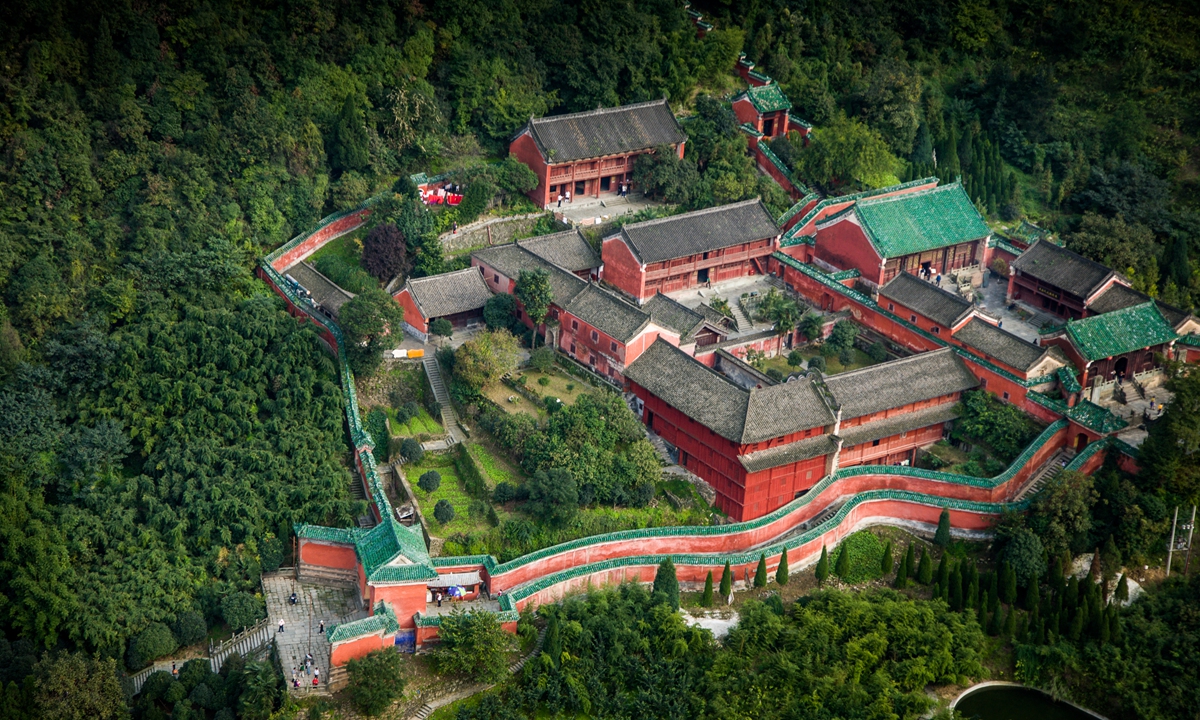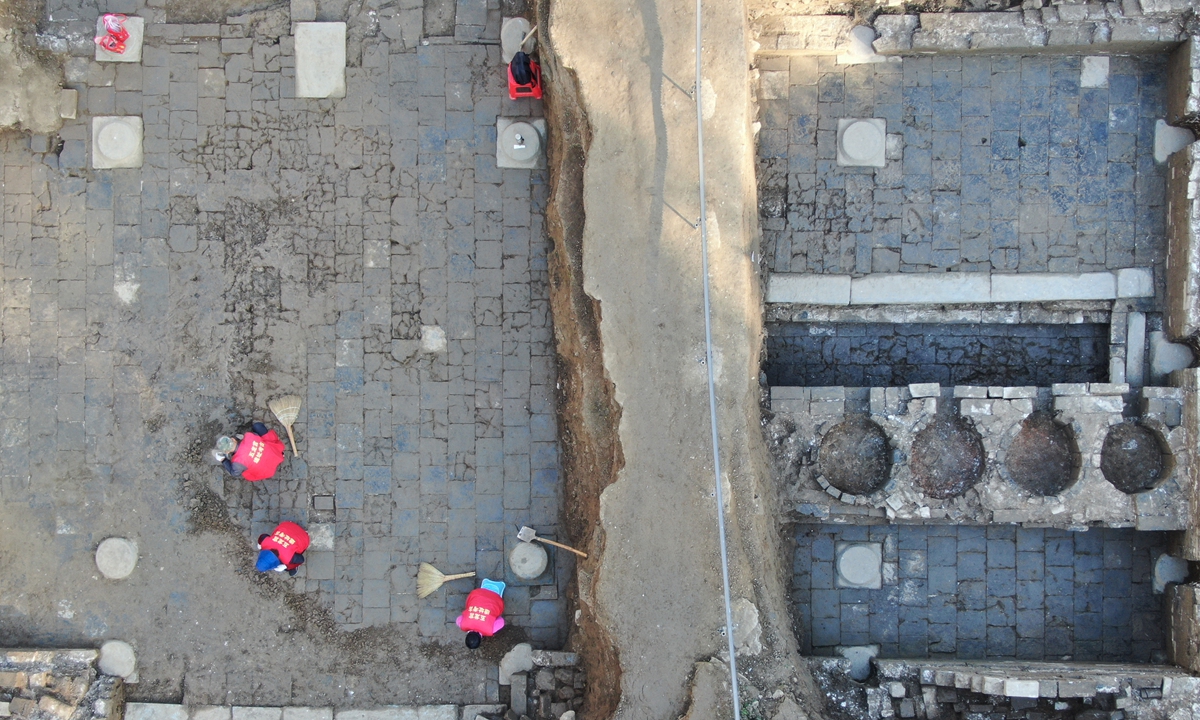
An ancient building complex located in the Wudang Mountains in Hubei Province Photo: IC
More historical secrets from the Wudang Mountains, home to a famous complex of Taoist architecture handed down from one dynasty to another, have been uncovered by Chinese archeologists, who have excavated more than 1,000 cultural relics at the site.
The cultural relics were unearthed at the Wulong Palace (Five-dragon Palace) located deep within the Wudang Mountains in Central China's Hubei Province. The Wulong Palace is a royal-commissioned Taoist temple built in the Tang Dynasty (618-907) that gradually fell into disuse after the Qing Dynasty (1644-1911), according to the Hubei Provincial Institute of Cultural Relics and Archaeology.
Excavation of the site, started two years ago, has provided a number of discoveries of religious and architectural significance that have given researchers better insight into Taoist architecture and history. The number and types of newly-unearthed cultural relics are outstanding, experts say, as they are well integrated into the surrounding natural landscape, making them important objects for learning more about the architectural layout and the construction techniques used in Taoist temples.

Archaeologists clean up the excavation site at the Wulong Palace at Wudang Mountains in Central China's Hubei Province. Photo: VCG
Insight into the pastThe ancient building complex located amongst the peaks, ravines and valleys of the picturesque Wudang Mountains was included on the list of UNESCO World Cultural Heritage in 1994.
Established as a Taoist center during the early Tang Dynasty, some of the buildings in the complex date back to the 7th century. The surviving buildings exemplify the architectural and artistic achievements of China's secular and religious buildings of the Yuan, Ming and Qing dynasties.
The ancient building complex reached its peak during the Ming Dynasty (1368-1644), with the number of buildings reaching nine palaces, nine monasteries, 36 nunneries and 72 temples, following a major building campaign undertaken by the Yongle Emperor as part of efforts to align his imperial regime with Taoism.
The excavation covers an area of nearly 7,000 square meters, including the ruins of 10 houses and two man-made ponds. More than 1,000 cultural relics have been unearthed so far, including some relics that date back to the Han Dynasty (206BC-AD220).
The unearthed cultural relics belong to eight categories such as pottery, porcelain, copper, iron and wood. In addition to a large number of ceramic and glazed architectural components such as hooks, water drops, cylinder tiles and animal roof decorations, many different daily utensils including bowls, plates, cups, dishes and copper coins were discovered alongside candlesticks, sickles and hairpins.
A few religious items, including statues of gods and stone carvings, were also unearthed.
Among them, the most exciting discoveries are several sculpted reliefs showing five dragons, the mythical Black Tortoise of the South Xuanwu, fire patterns and a jade rabbit making herbal medicine, according to Kang Yuhu, head of the excavation project.
Researchers theorize the five-dragon relief was built and used by the royal family for the ritual of "Five Dragons Praying for Rain." The surrounding stone stairs suggest the relief was once part of an altar capable of hosting large gatherings.
Hidden in the mountains
Further research into the temple and its unearthed artifacts is still underway, and researchers are translating and identifying the inscriptions on uncovered stone tablets. The Wulong Palace is significant since it is the most well-preserved ancient Taoist temple connected to royal traditions and culture, Xu Yitao, an architectural archaeologist in Beijing, told the Global Times.
"China has other ancient Taoism-inspired complexes, but this one is the most representative one since it was built deep in the mountains and so was largely left alone."
Xu Shuming, a cultural researcher, told the Global Times that the ruins' unique royal-Taoism combination makes the complex an epitome of "cultural beliefs" and the "early development of Chinese philosophy" during the Tang Dynasty.
Xu Yitao emphasized that the site selection for the Wulong Palace was also ingenious.
"The site selection, and also the formation of the architecture, shows how ancient Chinese drew upon Taoism's respect for nature as guidance for the complex's design," Xu noted.
The discovery of living quarters at the site also holds huge archaeological potential the complex's legacy.
"It was a side building for the whole architectural complex. If just as many relics can be found here as elsewhere in the site, Wudang's legacy is sure to have great archeological value," Xu noted.
The expert also told the Global Times that future research will involve more detailed analysis of the discovered relics, which should eventually lead to restoration of the site.
"We should also use digital technology to allow the public to see their cultural heritage," Xu noted.
Besides of Taoist architecture, the Wudang Mountains are famous around the world among fans of kung fu as it is home to Taoist inspired martial arts such as Tai chi.
People head to schools in the Wudang Mountains to learn traditional Chinese martial arts. Jake Pinnick from the US is one such example.
He said that he traveled to the Wudang Mountains when he was 20 years old and has studied at the Wudang School of Martial Arts learning kung fu and Taoist philosophy for dozens of years.





